Otoplasty in Dallas
Search and Compare the Best Clinics and Doctors at the Lowest Prices for Otoplasty in Dallas

Find the best clinics for Otoplasty in Dallas
No pricing info available
Egypt offers the best prices Worldwide
Price: $ 100
From 138 verified reviews
Yvonne Garcia, 17 September 2020
I was referred to Dr. Jejurikar by Dr. Gardner and I’m SO HAPPY that I finally went to see him. He’s the best (FIRST) experience I had with plastic surgery and I’d recommend him to anyone who’s contemplating having a procedure done. He and his entire office staff are friendly, patient and so very helpful.
From 37 verified reviews
Adrianna Amador, 16 September 2020
Loved the experience & the staff is amazing very attentive! Dr. Burns knew exactly what I wanted and needed! So far love my results you won’t regret being taken care of by him!! Definitely going back for more!
North Texas Plastic Surgery, can be found in Vickery Meadow, Dallas, United States and offers its patients Otoplasty procedures as well as 29 other procedures, across 1 different procedure categories. At present, there is no pricing information for Otoplasty procedures at North Texas Plastic Surgery. The pricing information is quite specialised, so it's only available on request. A small team of medical professionals undertake all procedures at the Clinic, with 2 in total, and North Texas Plastic Surgery is not accredited by any recognised accreditations institutions.
- Home
- United States
- Dallas
Compare Before & After Photos of _procedure_photos.phpOtoplasty
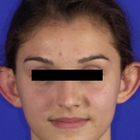
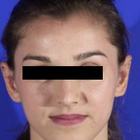
Front view
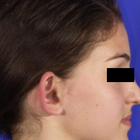
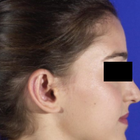
Full-side view
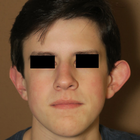

Front view

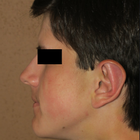
Full-side view
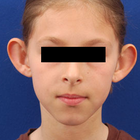
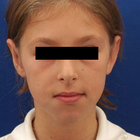
Front view
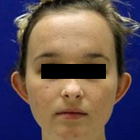
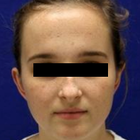
Front view
WHY US?
At Medijump, we're making medical easy. You can search, compare, discuss, and book your medical all in one place. We open the door to the best medical providers worldwide, saving you time and energy along the way, and it's all for FREE, no hidden fees, and no price markups guaranteed. So what are you waiting for?

Free

Best Price

Widest Selection

Risk-Free
What you need to know about Otoplasty in Dallas

Otoplasty, also referred to as cosmetic ear surgery, is a type of cosmetic procedure to change the size, shape, or position of the ear. It is performed on the visible part of the outer ear, called auricle. Some people choose to have the surgery to correct odd-shaped ears due to an injury or birth defect. Others have it because they are concerned with how their ears protrude too far from their head. Otoplasty can be performed at any age after the ears have reached their full size, generally after age 5. In some cases, the surgery may be done as early as age 3.
There are several types of otoplasty. The following are the most common:
- Ear pinning draws the ears closer to the head. It is usually done on people whose ears stick out too far from their head.
- Ear augmentation is ideal for individuals whose ears are small or have not completely developed. This type of otoplasty can increase the size of the outer ear.
- Ear reduction is usually done on people with macrotia, which is a condition when the ears are larger than normal. Otoplasty can reduce the size of the ears.
What does a Otoplasty Procedure Involve?
Otoplasty is typically carried out under local anesthesia with a sedative, so you will be awake but you will not feel any pain. In some cases, general anesthesia may be used, typically for younger children.
The techniques used by your surgeon vary based on the type of otoplasty you are having. In general, your surgeon makes an incision either within the inner creases of your ears or on the backs of your ears. Then, your surgeon manipulates the tissue of the ear, which may include removal of cartilage or skin, grafting of cartilage to the ear, or folding and shaping of cartilage using permanent stitches. Once your surgeon is done correcting the shape, size, and position of your ears, the incisions are closed with stitches.
How Long Should I Stay in Dallas for a Otoplasty Procedure?
Otoplasty can take between 1 and 3 hours to perform, depending on the complexity and the specifics of the procedure. It is typically done as an outpatient procedure, which means you can leave the hospital on the same day. It is recommended that you stay in Dallas for 7 more days for follow-up checkups and removal of stitches.
What's the Recovery Time for Otoplasty Procedures in Dallas?
The recovery period may vary from one person to another. You may experience numbness for several weeks, and mild bruising for about 2 weeks. For several months, your ears may feel stiff and sore.
You should be able to go back to work and resume your normal activities, including exercise, within one to two weeks after surgery. Physical contact sports, such as rugby, football, or judo, should be avoided for at least 3 months. You should also avoid swimming for up to 8 weeks following your otoplasty.
What sort of Aftercare is Required for Otoplasty Procedures in Dallas?
Your surgeon will provide post-operative instructions. Make sure to follow the instructions carefully to promote smooth and quick recovery. You should rest with your head elevated on 2-3 pillows to minimize swelling. It is recommended that you eat a light, soft, and cool diet for several days. Take pain medication as prescribed by your doctor. Avoid sleeping on your side or rub the incisions to keep pressure off your ears. Consider wearing shirts with loose-fitting collars or button-down shirts.
What's the Success Rate of Otoplasty Procedures in Dallas?
Otoplasty is a safe and effective procedure, with high satisfaction rates. More than 90% of people who had the procedure claimed to be extremely happy with the results. Note that it may take some time for the result to be fully visible.
While it is a safe procedure, you still need to be aware of possible risks and complications that otoplasty carries. These include bleeding, hematoma formation, infection of the skin, infection of the cartilage of the ear, permanent or temporary numbness around the affected area, scar or keloid formation, unfavorable results, prolonged pain, narrowing of the external ear canal, impaired healing, changes in skin sensation, asymmetry, and overcorrection.
Are there Alternatives to Otoplasty Procedures in Dallas?
There are not many viable alternatives to otoplasty as of yet. One of the most popular alternatives is nonsurgical otoplasty, which does not require any incisions. The procedure uses special sutures to pin the ears back and achieve a more symmetrical look. These sutures are woven into the ears and will remain in place permanently. They are also virtually invisible, so the results will look natural.
For babies under three months old with prominent ears, ear-molds can be taped to their ears to reshape the ears without surgery. This type of treatment typically takes about six to eight weeks.
What Should You Expect Before and After the Procedure
Before otoplasty, you may have prominent or large ears or other deformity caused by an injury or birth defect that bothers you. Some people also feel self-conscious and embarrassed by the shape, size, and position of their ears. After the procedure, your ears will be corrected. Small or underdeveloped ears will be augmented to increase the size, the size of large ears will be reduced, and prominent ears will be drawn closer to the head. Your appearance will improve and you may feel more confident.
Whilst the information presented here has been accurately sourced and verified by a medical professional for its accuracy, it is still advised to consult with your doctor before pursuing a medical treatment at one of the listed medical providers
No Time?
Tell us what you're looking for and we'll reachout to the top clinics all at once
Enquire Now

Popular Procedures in Dallas
Prices Start From $28

Prices Start From $1,945

Prices Start From $120

Prices Start From $275

Recommended Medical Centers in Dallas for Otoplasty

- Interpreter services
- Translation service
- Religious facilities
- Medical records transfer
- Medical travel insurance
- Health insurance coordination
- TV in the room
- Safe in the room
- Phone in the room
- Private rooms for patients available

- Interpreter services
- Translation service
- Religious facilities
- Medical records transfer
- Medical travel insurance
- Health insurance coordination
- TV in the room
- Safe in the room
- Phone in the room
- Private rooms for patients available

- Interpreter services
- Translation service
- Religious facilities
- Medical records transfer
- Medical travel insurance
- Health insurance coordination
- TV in the room
- Safe in the room
- Phone in the room
- Private rooms for patients available

- Interpreter services
- Translation service
- Religious facilities
- Medical records transfer
- Medical travel insurance
- Health insurance coordination
- TV in the room
- Safe in the room
- Phone in the room
- Private rooms for patients available

- Interpreter services
- Translation service
- Religious facilities
- Medical records transfer
- Medical travel insurance
- Health insurance coordination
- TV in the room
- Safe in the room
- Phone in the room
- Private rooms for patients available

- Interpreter services
- Translation service
- Religious facilities
- Medical records transfer
- Medical travel insurance
- Health insurance coordination
- TV in the room
- Safe in the room
- Phone in the room
- Private rooms for patients available

- Interpreter services
- Translation service
- Religious facilities
- Medical records transfer
- Medical travel insurance
- Health insurance coordination
- TV in the room
- Safe in the room
- Phone in the room
- Private rooms for patients available

- Interpreter services
- Translation service
- Religious facilities
- Medical records transfer
- Medical travel insurance
- Health insurance coordination
- TV in the room
- Safe in the room
- Phone in the room
- Private rooms for patients available
Otoplasty in and around Dallas
About Dallas
Dallas, or nicknamed as the Big D, is a metropolitan city located in North Texas. The city is known for its massive excellent museums, youthful vibe, edgy culture, and distinctive neighborhoods. Thanks to its charming attractions combined with world-class medical centers, the city is now a rising medical tourism destination. Additionally, the expansion of the medical district in Northwest Dallas has contributed to the city’s popularity as a medical destination. The district is home to numerous significant hospitals and institutions, such as UT Southwestern Medical Center and Parkland Memorial Hospital. More and more people, both from other cities in the United States or from other countries in the world, come to Dallas to get treatment with modern medical equipment, professional doctors, and world-class medical centers. Among the surgeries and treatments available, lung treatment is the most sought-after procedure.
Popular Areas in Dallas
- Dallas Arboretum & Botanical Garden is 66 acres of lush nature that showcases beautiful plants and flowers in themed areas. It has 19 gardens to explore, such as the Woman’s Garden, DeGolyer Gardens, Sunken Garden Crape Myrtle Alee, and Nancy’s Garden. Autumn at the Arboretum is Dallas’ Favorite Tradition during the fall that visitors should not miss. During spring, Pink Hyacinths with violas and daffodils bloom in the gardens, and the whole arboretum is packed with visitors and the nearby streets are closed.
- Nasher Sculpture Center is a museum that houses the Patsy and Raymond Nasher collection of modern and contemporary sculpture. Together, they accumulated one of the most comprehensive private collections in the world. Tourists can admire masterpieces such as works by Alexander Calder, Alberto Giacometti, Henri Matisse, Paul Gaugin, and Willem de Kooning, among others. Designed by architect Renzo Piano, the building itself is a work of art.
- Pioneer Plaza is the biggest open space in Dallas as well as one of the most visited tourist sites in the city. It is surrounded by super detailed sculptures of cattle, trees, and flowers that are native to the area. Tourists can find a small waterfall and creek in the area. There is also an early period cemetery from the 1800s where former Dallas mayors and Texas Revolution leaders are buried. It is truly the place that honors the tradition and culture of Texas.
- Sixth Floor Museum at Dealey Plaza is located in the former Texas School Book Depository, which is the very spot where Lee Harvey Oswald, according to government investigations, shot and killed President John F. Kennedy. The museum uses historic films, photographs, artifacts, and interpretive display to exhibit the social and political landscape of the early 1960s, the assassination of President Kennedy and its aftermath, as well as the legacy that he left behind.
Weather and Climate in Dallas
June to August is Summer in Dallas, and the temperatures can soar to over 30 °C. In addition to the heat, the high humidity levels will make the weather feel unbearable. However, it is the most popular time to visit the city. Autumn brings cooler and pleasant weather to the city. The temperatures can drop to 21 °C, and the city will be less crowded than the summer. Winter starts in December and ends in February. Average daytime highs are around 10 °C, but there are days with below-freezing temperatures. The city may also receive a few days of snowfall. From Mach to May is spring and the temperatures are rising to 21 °C, but there is a lot of rain during this season.
Getting Around in Dallas
The primary international airport is the Dallas/Fort Worth International Airport. It is the ninth busiest international gateway in the United States and operates flights to and from many cities around the world, including London, Dubai, and Tokyo. It is the largest hub for American Airlines, and several budget airlines serve flights from this airport, such as Spirit Airlines and Sun Country Airlines.
The city has a light rail system that connects the downtown with many other areas in the city. It is operated by Dallas Area Rapid Transit (DART) and features four lines (Red, Orange, Green, and Blue) servicing 64 stations. The trains run from 5.00 AM to midnight. There is also another train system known as the Trinity Railway Express (TRE) that connects Dallas and Fort Worth. The TRE trains from Fort Worth and Dallas operate from 5.00 AM to 11.00 PM from Monday to Friday. Dallas Area Rapid Transit also operates an extensive bus system that serves 11,000 stops throughout central Dallas and the Metroplex. Taxis are the easiest way to get around the city, especially for first-time visitors as they are relatively inexpensive with an initial charge of $5 and then $3 for each mile.
Tourists Visas in Dallas
Canada, Marshall Island, Micronesia, Palau, and Bermuda are given visa exemption access to enter the United States. Holders of passports issued by 38 countries, such as Australia, Singapore, and the United Kingdom, are selected for the Visa Waiver Program, which means they can enter without a visa. Other countries not listed in the visa exemption and visa waiver program need to apply and obtain a visa to enter the country. All visitors may stay for up to 90 days. It is advisable to check the visa policy at your nearest United States Embassy.
Additional Information
- Local Currency: The official currency is the US dollar ($). It is considered as a global currency used in many international transactions.
- Money & Payments: ATMs are easy to find, commonly at airports, banks, malls, gas stations, and convenience stores. Credit and debit cards are widely accepted and usually required for reservations. Since service employees make minimum wage, tipping is essential.
- Local Language: English is the most widely spoken language, and more than 29% of the residents speak Spanish.
- Local Culture and Religion: Around 55% of the population is religious. Christianity is the largest religion in Dallas, followed by Islam, Judaism, and eastern faith.
- Public Holidays: New Year’s Day, Texas Independence Day, Independence Day, Thanksgiving, and Christmas are some of the major public holidays in Dallas. The city hosts numerous annual festivals such as Scarborough Renaissance Festival and Texas State Fair.
Popular Searches
- Plastic Surgery in Thailand
- Dental Implants in Thailand
- Hair Transplant in Thailand
- Breast Augmentation Thailand
- Gastric Sleeve in Thailand
- Gender Reassignment Surgery in Thailand
- Laser Hair Removal in Bangkok
- Botox in Bangkok
- Dermatology in Bangkok
- Breast Augmentation in Bangkok
- Coolsculpting in Bangkok
- Veneers in Turkey
- Hair Transplant in Turkey
- Rhinoplasty in Turkey
- Stem Cell Therapy in Mexico
- Rhinoplasty in Mexico
- Liposuction in Mexico
- Coolsculpting in Tijuana
- Rhinoplasty in Korea
- Scar Removal in Korea
- Gastric Sleeve in Turkey
- Bone Marrow Transplant in India
- Invisalign in Malaysia
- Plastic Surgery in the Dominican Republic
- Tummy Tuck in the Dominican Republic
- Plastic and Cosmetic Surgery in Poland
- Rhinoplasty in Poland
- Hair Implant in Poland
- Dental Implants in Poland
- IVF in Turkey


